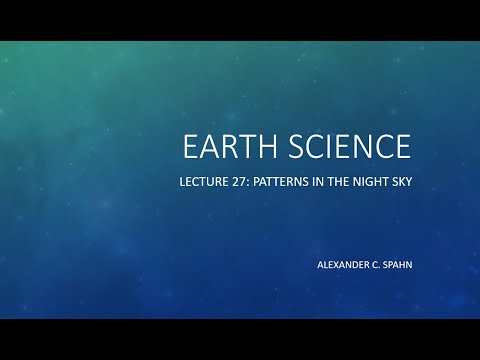Description:
Explore the fascinating patterns of the night sky in this 23-minute lecture from Spahn's Science Lectures. Delve into the world of constellations and learn about diurnal motion, the North Star, and the movements of the celestial sphere. Discover how to make measurements using the celestial sphere, including angular measurements, angular sizes, and distances. Understand the small angle formula and its applications in astronomy. Learn about the apparent separation of objects in the sky, the visibility of constellations in different seasons, and the concept of arcseconds. Finally, explore the Sun's apparent path against the celestial sphere, known as the ecliptic.

Earth Science - Patterns in the Night Sky
Add to list